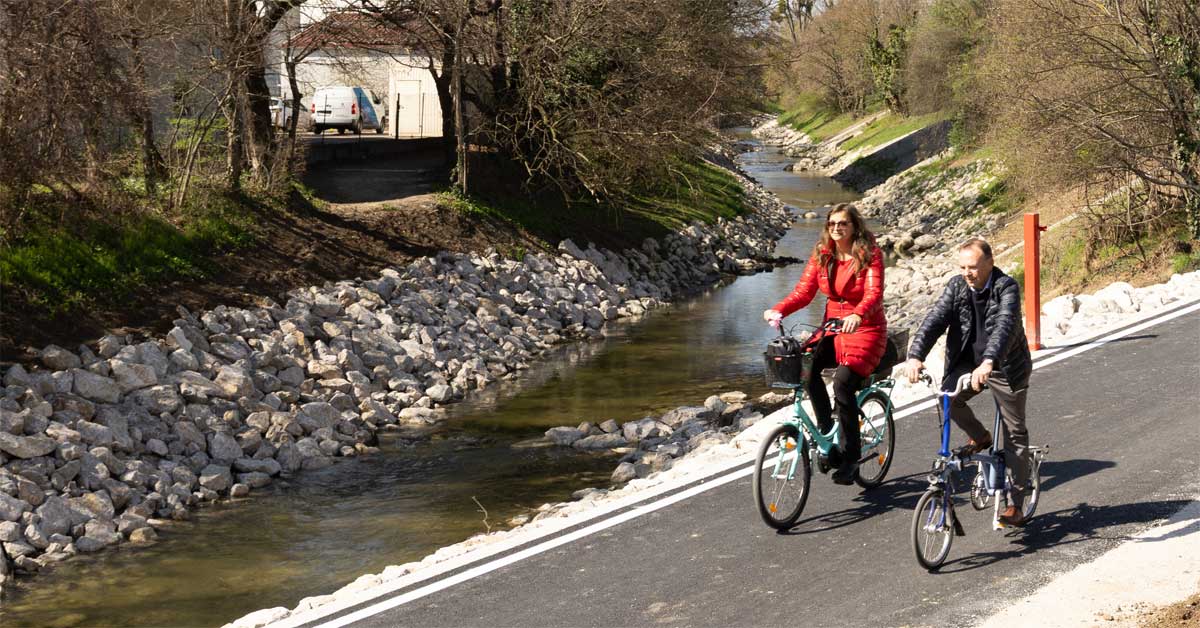

22 April 2025  Vienna's summers are getting hotter. Over the past several decades, Vienna has experienced a significant increase in average temperatures. Specifically, in 2024, the lowlands of Austria, including Vienna, were 3.1°C warmer compared to the 1961–1990 average, marking it as the warmest year in Austria's 257-year measurement history. Multiple heatwaves sent temperatures soaring past 35°C, and the number of tropical nights rose significantly. This shift toward hotter, drier summers has intensified the phenomenon of urban heat islands, especially in densely built-up areas where asphalt and concrete dominate the landscape. Smart Surfaces on Trial: Liesingbach Bike Path Pilot ProjectIn response to these rising temperatures, the City of Vienna is testing new climate-resilient surfaces along a section of the Liesingbach bike path. The project is a three-year pilot supported by the Federal Ministry for Agriculture, Forestry, Climate and Environmental Protection, Regions and Water Management, in cooperation with the City of Vienna. It aims to understand how different types of asphalt affect surface temperatures and water permeability under real urban conditions.The test area, located near Draschepark, includes four 20-meter sections of different asphalt types, each equipped with temperature and moisture sensors: - Variant 1: Open-pored asphalt made with coarse gravel – designed to let rainwater seep through, cooling the surface through evaporation. - Variant 2: Brightened asphalt using reflective aggregate – to reduce heat absorption. - Variant 3: Conventional asphalt – serving as a control sample. - Variant 4: Light yellow asphalt – made with transparent binder and light-colored gravel, this surface reflects sunlight and stays cooler. The Technical University of Vienna is overseeing the monitoring process. The data collected will guide future decisions on how to reduce urban heat through innovative paving solutions. (Source: Press release via APA-OTS) More Than Asphalt: A Green Corridor for the CityThe test site lies along the Liesingbach bank, which is itself undergoing a major renaturation effort. Over the past two decades, more than 9 kilometers of the stream have been transformed into a green, ecologically diverse corridor. By 2027, another 9.2 kilometers will be restored to a more natural state. This work improves not only the local ecosystem and flood protection, but also quality of life for residents—and now, cyclists too. New bike underpasses and tree plantings are enhancing the popular path, making it both climate-friendly and comfortable for daily use.Back to the Roots: A Broader Urban StrategyThe Liesingbach project appears to be part of a larger strategic shift. Under the umbrella of the "Raus aus dem Asphalt" ("Out of the Asphalt") initiative, Vienna is rolling out widespread measures to unseal paved surfaces, introduce more greenery, and cool down urban spaces. These efforts include the planting of trees, installation of water features like mist fountains, and the redesign of key streets and plazas—such as Thaliastraße, Praterstraße, and Christian-Broda-Platz.From an observer's perspective, it seems Vienna is not only responding to climate change, but also attempting to redefine what urban space can look like. By combining infrastructure with ecological thinking, the city is moving—metaphorically and physically—back to its roots, blending technology, mobility, and nature in pursuit of a more resilient future. Image: The photo shows Vienna’s City Councillor for Urban Planning, Ulli Sima, whose department leads the “Out of the Asphalt” initiative to replace sealed surfaces with greenery across the city. Next to her is Gerald Bischof, District Head of Liesing, who highlighted in the official statement the benefits of the renaturation efforts along the Liesingbach. Both are pictured cycling along the Liesingbach bike path. Photo: © Stadt Wien / Lukas Fuchs. |